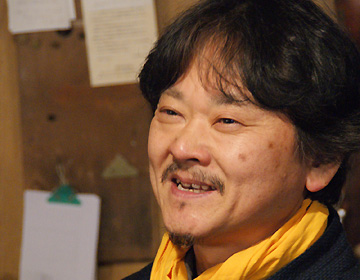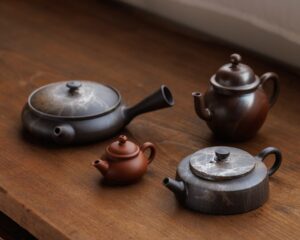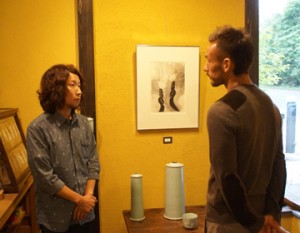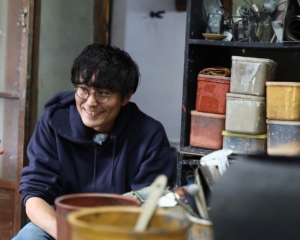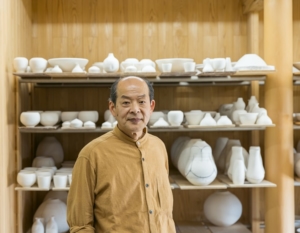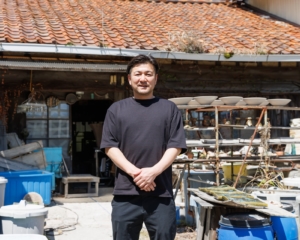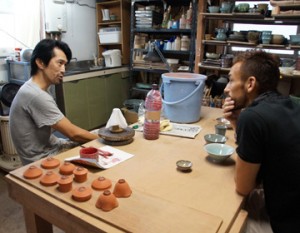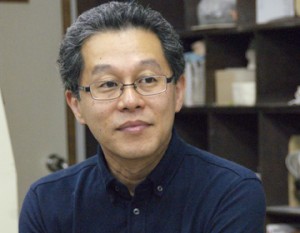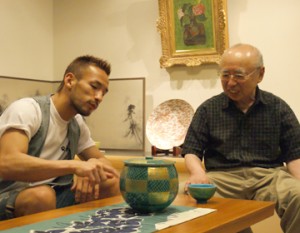In search of his own style of ceramics
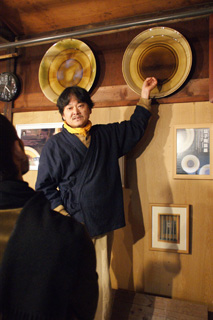
Katsudo Nakajima first aspired to become a ceramist when he was in high school. He felt a warm nostalgia when he saw Korean Ly Dynasty ceramics at a folkcraft museum in Meguro-ku, Tokyo.
In Japan, Hagi in Yamaguchi Prefecture produced ceramics by using Korean type ascending kiln. ”If that’s the case, I should learn ’Hagi-yaki.’” he decided, but on his way to Hagi, he traveled to other parts of western Japan. He traveled around Japan in his car. From Seto to Shiga, Kyoto, then to Kyushu, then finally to his final destination, Hagi.
After actually studying the method under a master, he felt that the current ”Hagi-yaki” differed from that of the Ly Dynasty, so he decided to learn old Japanese pottery techniques, and head for ”Shigaraki-yaki” kiln in Shiga.
Owning his own kiln
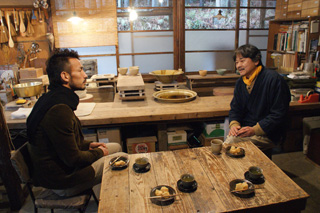
”In Shigaraki, they used to make pottery for everyday life. They also made pottery for tea ceremonies. But that didn’t really suite me either. I wanted to make something that is enjoyed by all five senses, as it is being used.” Realizing that everyday kitchenware fit this ideal, he decided to relocate to the Iga region to train further. The journey was long but everything he learned makes up who he is now. When he turned 30 in 1984, he moved to Kanagawa and built an ascending kiln.
”In the end, I wanted to create something not from Ly Dynasty, not Hagi, nor Iga, but my own style of ceramics. But my start was the Ly Dynasty style, so I decided to start with the ascending kiln.” Nakajima still produces ceramics with the Korean style ascending kiln.
Ascending kiln and glaze
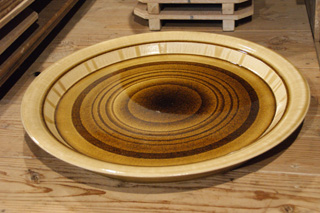
The characteristics of the pottery baked in an ascending kiln is the rich coloring on the pieces brought on by this type of kiln. The ashes from the pine tree blends with glaze and fuses into glass of many colors in the 1200℃ blaze.
”For me, the greatest appeal of ceramics is the glaze.” He showed us a large plate as he explained. On the plate, we see multiple layers of circles with a gradation of a deep caramel color in the center.
”When I’m molding the pottery, the surface is bumpy then I apply glaze on these bumps. As the pottery is baked, the pool of glaze gathers in the dents and make these colorings appear.” The pieces with the pool of glaze evolved over time, and he now experiments with the amount and blend of the glaze.
”The translucency of the ash glaze makes it possible for the warmth of the clay to appear.” Nakajima told us. He still aspires to recreate the ceramics he encountered as a high school student, pottery with warmth.



